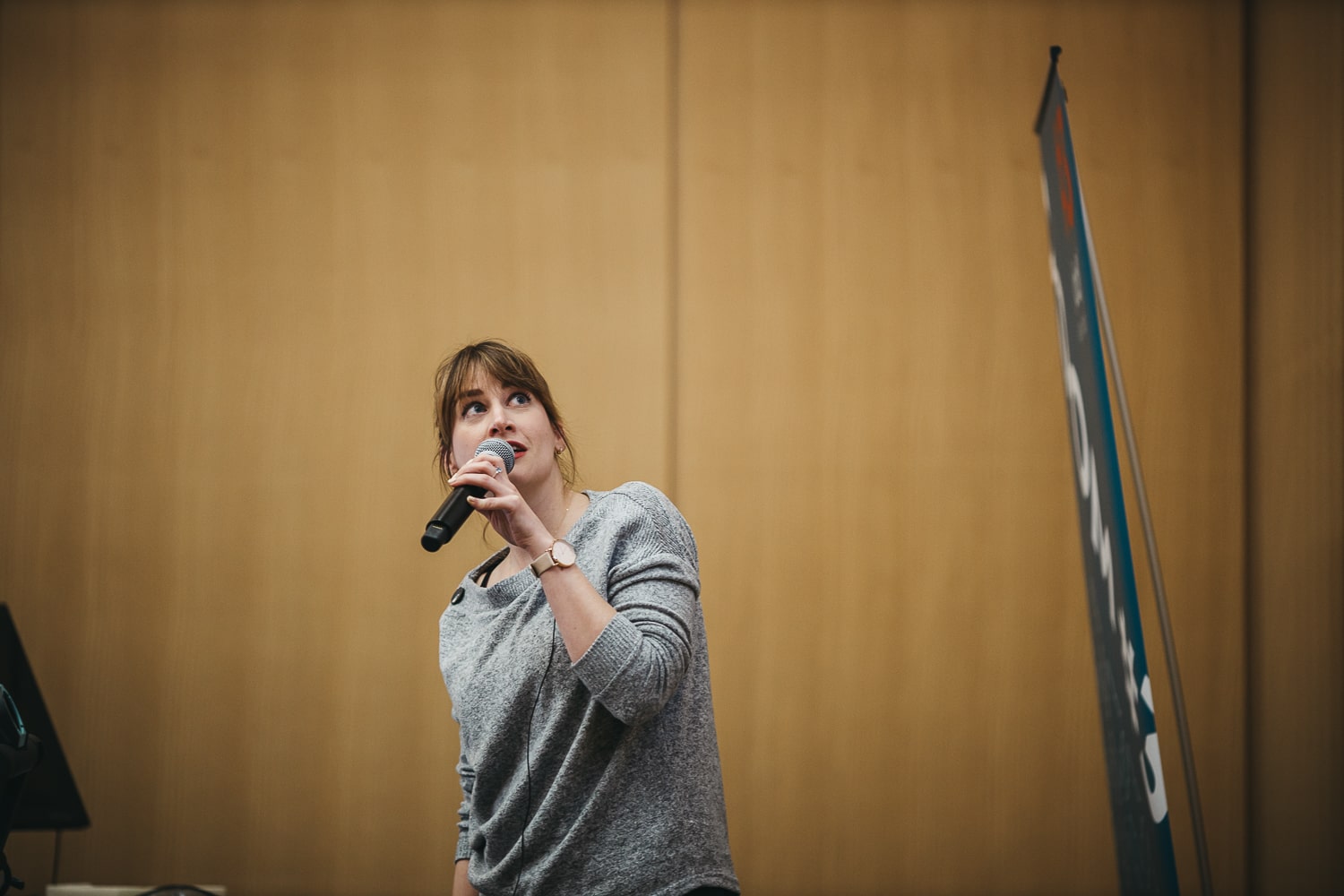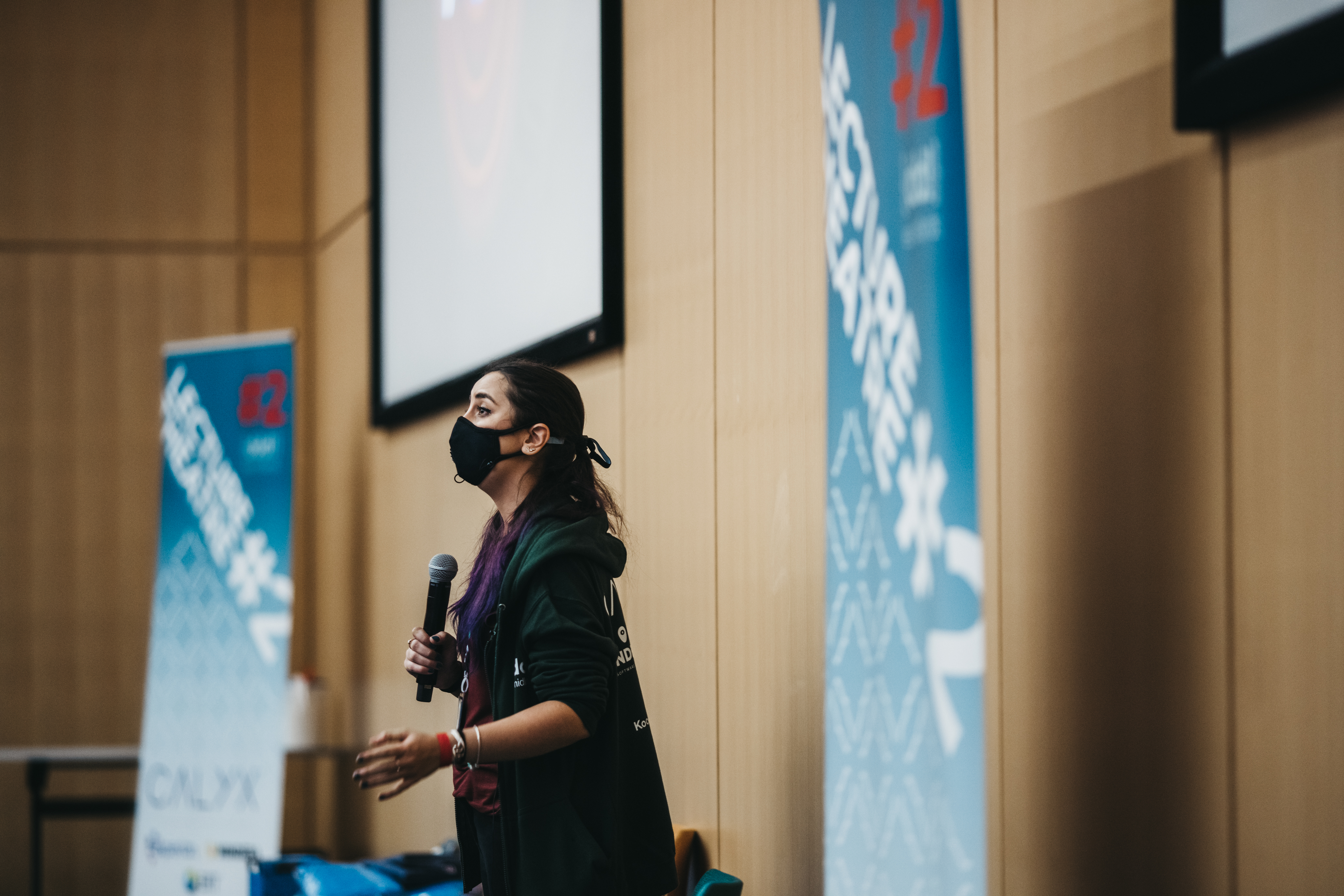Making Social Media Fun.
Introduction
Here we will cover some hints and tips to help your social media presence coming up to and after your talk. There are a few advantages to this:
- Improving the experience for your attendees.
- Easily seeing feedback (what hit home for your attendees).
- Saves time and effort of “on the fly” social media.
- It can take some pressure off ensuring you deliver all your content.
Handles And Hashtags On Slides
At the top corner of all my slides I add the following:
- Hashtag and/or Twitter handle of the event I am speaking at
- My own Twitter Handle
- Sometimes a hashtag for the talk
This is a hint to the attendees what to include when they are tweeting a picture or a quote. It helps give me visibility of the tweets and also gives the event visibility of the social media activity generated from the talk.#
I put this at the top so it is visible to everyone in the room.
If you put this information at the bottom of the slide, it might get blocked by someone’s head.
Make Your Slides Available
Some people will benefit from having your slides before the talk. Not all slides are useful by themselves, for providing context or actual content. You may wonder why someone wants copies of your pictures.
- Some people like to make notes on printed out slides
- If there is text on your slides, some people find it easier to read off paper, or their own device than a screen.
I personally use Noti.st for my slide hosting. It has a number of features I really like:
-
Choosing which slides you want to publish
When you upload a talk to Notist, you can select if there are certain slides you don’t want to publicly share. Some of my slides would not be great out of context - sometimes publishing out of context slides can cause trouble for a speaker. As such I choose to not publish those particular slides.
-
Adding context to slides
There is the option to add notes to each slide. Maybe you would like to add summary bullet points. Maybe you would like to provide all of your speaker notes instead of publishing a blog. The world is your oyster.
-
Option to make your slides available for download
You can choose if people can download your slides, or just view them on the webpage. I always make my slides available for download, just in case there is someone who would benefit from printing the PDF.
-
Can link resources
Super useful. Everyone takes a photo of your resources slide at the end of your talk - or you promise to share them on social media, but this is a lot of effort and I know I have forgotten to do it before. On Notist you can provide links and descriptions to all your resources. One link for all those resources.
-
Can attach peoples tweets about the talk
This is a bit cheeky - but you can link people’s tweets about your talk. I find this helps encourage people to come and see me speak, and even helps with the argument of why I should be accepted to speak at an event.
Others use Slidedeck or publish their Google Slides link. Their are a lot of options for sharing your slides.
Timed Posts And Managing Responses
Shock! Horror! Not all the of DDD East Mids posts, or even my own posts are posted on the spur of the moment. It’s all smoke and mirrors! It’s a sham!
With the events I’ve organised, having a way of scheduling tweets and other social media posts has been a blessing. I can look at peak times, sit one evening a week and get all the major posts scheduled and in place. This doesn’t mean we don’t post around these, but that the big announcements are done in an automated way. This saves human error as well as effort.
In terms of speaking, there is a format to my scheduled posts:
-
Come see me speak at XYZ
When the tickets are available for an event I send out a plea (or few) to come along to the event and support my effort at speaking to a crowd of strangers. The aim is to promote the event and to find out who is going.
-
Need my slides? Find them here.
Mentioned in the previous section, some attendees will find it useful to have your slides in advance. I tweet this a few days before the talk I am doing with a link to where people can get hold of the slides. As you already know, I also schedule when these slides go public.
-
I’ll be in this room at this time
On the day of the event, an hour or so before the talk, I’ll publicise where people can come and see the talk. This reminds people I am speaking (pick me! pick me!) and helps if there are any last minute room changes.
-
Thanks for attending. Here are my resources.
I used to forgot to share my resources. Admittedly its now easier that I have my blog and Notist - I can share one link where people can find all the resources and references for the talk.
After presenting I am a mess of a human. I find public activities of all forms very tiring and intensive. My head is not in the right space to remember that people will want these links. If I schedule sharing them - I don’t forget.
Tools for scheduling and management:
Hootsuite or Buffer
For any social media accounts that aren’t Twitter I have used Hootsuite and/or Buffer. They do have functionality for scheduling tweets, but I use TweetDeck for all my Twitter needs which I will explore after.
With Hootsuite and Buffer, I can manage many social profiles, see mock ups of the posts I want to schedule and schedule them on a lovely calendar. If it’s an organisation with multiple users, we can share a multi-user account. They are simple, lovely to use services.
TweetDeck
I use TweetDeck for all my Twitter needs. There are a number of features which are useful both as a speaker and an event organiser:
-
Scheduling
TweetDeck enables you to schedule tweets and retweets with comments from multiple accounts. There isn’t a limit (at least that I’ve hit) on how many you schedule in advance.
-
Managing multiple accounts
I manage the DDD East Midlands Account and my own account from one TweetDeck screen. This isn’t a case that is useful for everyone, but this allows me to manage multiple accounts without reduced risk of publishing the wrong content on the wrong account.
-
Streams for tags and accounts
This is especially useful for talks. When at a conference you may want to keep an eye on the activity and notifications of your own account, of your personalised hashtag for the talk you are giving, the hashtag for the conference you are speaking at and maybe the handle of the conference you are at.
By following all those streams you can have personalised tracks of information about your account and your talk, but also about what is going on at the conference you are present at. It aids answering tweets directed at you and sharing posts about you.
-
Reply from the app
Everything can be managed from the site. It’s relatively intuitive. You can schedule posts, reply, retweet, quote, like and more.
Blogging To Support Content
I try to write blogs to support the talks I give. This is so I can provide more depth and context outside of the talk and have some information that can be shared to those who may prefer reading to watching talks online.
I can reference these blogs within the talks I do, I don’t have to panic about missing out vital information and I can add to it as I get more information on the topic.
These blogs I schedule to share after my talk, or reference as one of the resources.







